COVER
Women and Livingstone
Ahead of the reopening of the David Livingstone Centre in Blantyre, Lanarkshire, Jackie Macadam offers a new focus on the influence of women on his work.
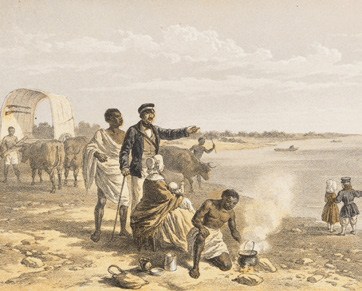
The family during an expedition to Lake Ngami (Sechele I is in the background)
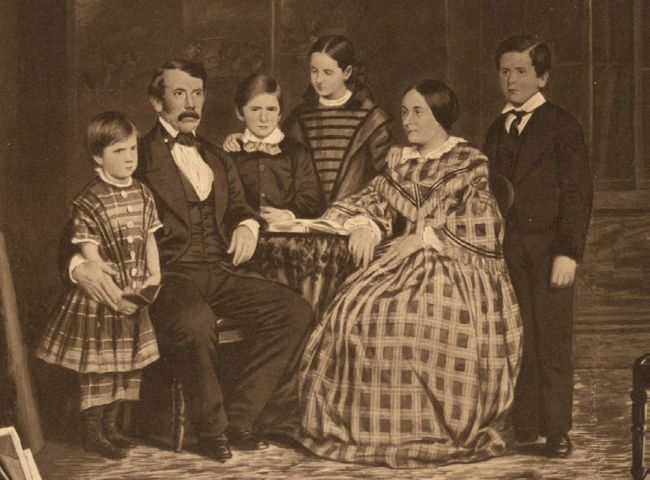
Mary and David with Robert, Agnes, Thomas and Oswell
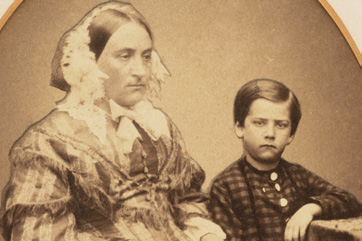
Mary with her son Oswell
“I LIKEN David Livingstone and his wife, Mary Moffat, to Fred Astaire and Ginger Rogers. Fred could dance – but Ginger did the same moves backwards and in heels!
“After all, Mary was to travel across more of central Africa than any other European woman at the time, notably crossing the Kalahari twice and both times while pregnant.”
Kate Simpson is a lecturer in Information Studies at the University of Glasgow and project scholar and UK outreach development officer for Livingstone Online, the largest online digital archive of the 19th century explorer, as well as a trustee of the David Livingstone Centre in Blantyre, Lanarkshire.
The centre opens in the summer after a five-year refurbishment. That refurbishment has given the trustees the chance to take another, fresh look at the people who worked with Livingstone, and in particular the role his wife, Mary Moffat, played in helping him achieve the things he did.
“Mary was born in Africa, to legendary missionary, Robert Moffat and his wife, Mary. Robert started his service in Kuruman, the most northerly frontier of the South African mission field.
“Robert and Mary brought their children up to be tough, able to survive in a potentially hostile environment. They learned to make soap, to make candles, and to tend the land, nurse, and speak the languages of the native people around them.
“Robert was not as educated as his future son-in-law but he was gallus and would negotiate between warring peoples or communities taking his wife and children when he went to meet them, sure that this would help them realise he was there on a peaceful mission, and not there to attack anyone.
“He was very brave, and this bravery led to him developing a really good reputation among the indigenous people, both in the area and beyond,” says Kate.
“It was a style of mission that David Livingston liked, and he became a ‘fan’ if you like, of Robert Moffat, even going along to hear him speak during a visit to London.
“David had been previously interested in being sent to China, but because of the opium wars it was considered too dangerous, so he was looking for another area to go to.
“Robert Moffat’s talks about the interior of central and southern Africa and its reputation of being the land of 1000 villages, inspired David, and he was sent by the London Missionary Society to work there, arriving on March 15 1841 after a three-month voyage. At Moffat’s Kuruman station David would take repeated journeys to the north, looking to better his understanding of the local languages and to look for sites for new mission stations.
“It was less than a year after establishing his own mission station at Mabotsa, in NW South Africa that he was famously attacked by a lion and bitten on his arm, very badly.
It was a serious injury that gave him problems for the rest of his life.
“A dreadful injury but one that had a silver lining – because it was when he was recuperating from it at Moffat’s Kuruman mission station, that he met Mary.
“The young couple fell in love, and the correspondence between them shows not just their love for each other, but also the respect they both had for the other.”
Kate smiles as she adds: “I think that Mary brings a humanity and a strength of character in their relationship.
“They were married when David was in his early 30s and Mary was in her mid-20s.”
David took longer and longer expeditions as he got older and more experienced – and Mary was normally with him, even though she was often pregnant.
And like her father before, the couple took their children with them on these missions too. It often meant that Mary, with her upbringing among the indigenous people, was a huge help to David, as she was able to speak many of their languages and the respect they had for Robert Moffat’s daughter, helped David be accepted more quickly than otherwise.
It also meant that often, the family had to fall back on the skills she’d learned as a child – making candles and teaching. In fact, in one of the areas the family stayed, Mary ran a school for 80 children; working in the house in the morning and teaching in the school in the afternoon.
“The dedication and the duty was incredible,“ says Kate. “And remembering that on one occasion, during one of the journeys, the couple lost a child, Elizabeth, yet carried on as they felt they were doing God’s work.
“David absolutely believed that it was his duty to spread the word of God, and that the most effective way to do that was for it to be tied to practical things, like teaching people how to build houses; planting trees, teaching them about irrigation and in these ways, help to spread God’s word.
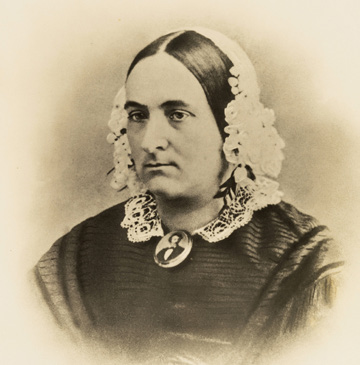
Mary by herself in her late thirties, she’s wearing a cameo of David around her neck
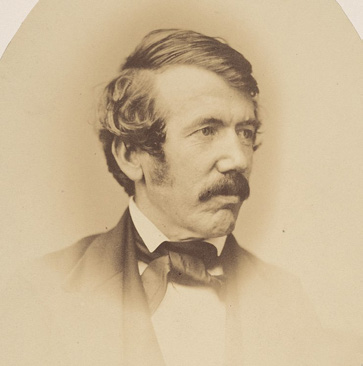
David Livinstone All images: Courtesy of David Livingstone Trust
“I think that Mary brings a humanity and a strength of character in their relationship. They were married when David was in his early 30s and Mary was in her mid-20s.”
“He was also a skilled doctor, and helped many women out with gynaecological problems, and people would travel for miles to be looked after by him.”
“Eventually though, David realised that the life was perhaps not really one for young children, and sent them back to Scotland, to Blantyre, with Mary.
“It was a terrible change for the woman and children who had only known Africa. “Initially they stayed with his parents in a small cottage, but things became strained and the family moved out.
“Mary didn’t have much money at the time – David was being paid around £150 a year but his expeditions ate half of that up and she had to get by on what was left.”
“It’s apparent from her letters,” says Kate, “That Mary is desperate to get back to David again, and eventually she returns in preparation for the Zambezi expedition to explore how civilisation, Christianity and commerce could be brought to bear to stop the East African slave trade.
“At last she returns to her beloved Africa, but before the expedition can begin, she is sent to her parents’ mission station to give birth again, this time to their last child.
“Unfortunately, this was one trip too many for Mary, and after contracting malaria, she died on April 27 1862 having had three final months with David. She is buried at Chupanga on the banks of the Zambezi. He wrote the most beautiful letter to the children, still in Britain, about their mother and how much he loved her.”
In 1869 a woman called Halima, was to join Livingstone’s party at Manyuema and begin to look after him. In language highly reminiscent of Mary, David was to describe her “as the best spoke in the wheel” of his expedition.
“She became his cook and took care of him, even though one popular story says that he always thought her cooking was awful, but he was so scared of her that he never told her!
“As his health waned in early 1873, she created a special flour for him that was very finely ground, as he’d lost most of his teeth by then, and she’d mix it into a mash that he was able to live on towards the end of his life.
“He had a great relationship with her, and what makes it striking, is that it was a relationship of equals, even though she was a poor African woman.
“He paid her the same as he paid the men on his expeditions. It was something we’re not used to when we think about the Victorians, and one of the things that made David – and Mary – stand out in history.”